
For those of you have had enough of the Forgotten Realms, people who have spent maybe a little too much time on Krynn, gamers that have grown a little tired of Eberron, there are other options out there, and not all of them have the Wizards of the Coast (WotC) trademark stamped on them. There is a small game publisher based out of Colorado called Gooey Cube that has built for D&D players a ready-made world to explore. The “Wy’rded World” of Zyathé is a D&D high fantasy setting that is compatible with WotC’s D&D 5e. There are multiple products available from the Gooey line, but this review deals with the first volume of the world Cyclopedia Zyathica which serves as a general overview and provides a basis for the development of campaigns in the setting. Gaming Trend received a review copy of the softcover book.
The book is a hefty 235 pages long and crammed full of information. It is well produced, with thick glossy pages and plenty of colorful, custom artwork, including maps and illustrations of the various races. The table of contents lists out eight chapters that provide enough information about the Wy’rded World for a DM to set a game in that setting. The primary topics of the book are a historical overview, tons of playable character races, the pantheon of gods, and unusual powers called blood-touched and Flowstones. Each chapter has plenty of useful illustrations to accompany the text, providing both flavor for the book and support for the written descriptions.
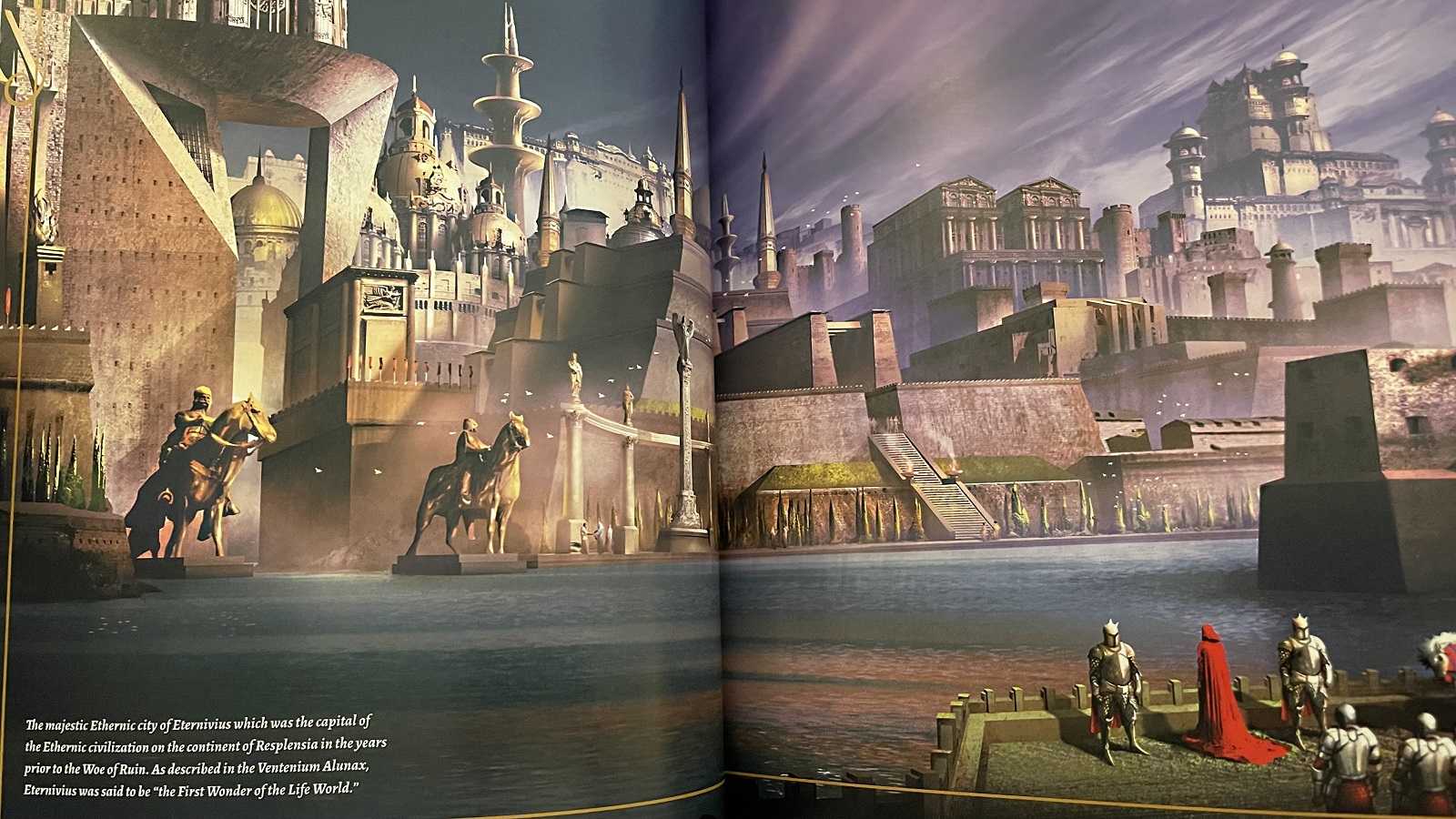
The introduction of the book provides the only explanation for why Zyathé is also called the Wy’rded World. It’s a result of the changes made to the planet by a cataclysm known as the “Woe of Ruin” that happened some 1,200 years ago. It’s also in the introduction where the book’s producers warn that readers may find the book either contains “much information about little… or little information about much”. I tend to agree with that statement, but this book is the first volume in a multi-volume set that has at least three other volumes, so those deficiencies are likely addressed in other releases.
The opening chapter of the book is a lengthy account of the history of the setting starting from the creation all the way up to present day. The chapter is twenty pages long and goes over the major events of the world over the millennia. In short, the god AvovA created everything in the cosmology of the setting including the game world, the cosmos, and the 72 gods. The only thing that AvovA did not create was four entities that sprang into being and eventually became known as the Lords of Corruption. The history of Zyathé includes two large cataclysmic events, one being a war between the evil gods and the good and neutral gods, fomented by the four Lords of Corruption. To end the influence of the Lords of Corruption and the war, AvovA sacrificed itself to fix things and imprison the four corruptors away. Centuries after the first cataclysm came the second, called the Woe of Ruin, where the Lords of Corruption were able to breach their prison and inflict themselves on the world. These world-changing events changed the way the races interacted in the world, changed the relationships of the gods, and physically changed the world. The Woe of Ruin also created a new race called the Thuul and caused the random birth of blood-touched, people with extraordinary abilities. There is more on blood-touched, but very little on the Thuul in the book.
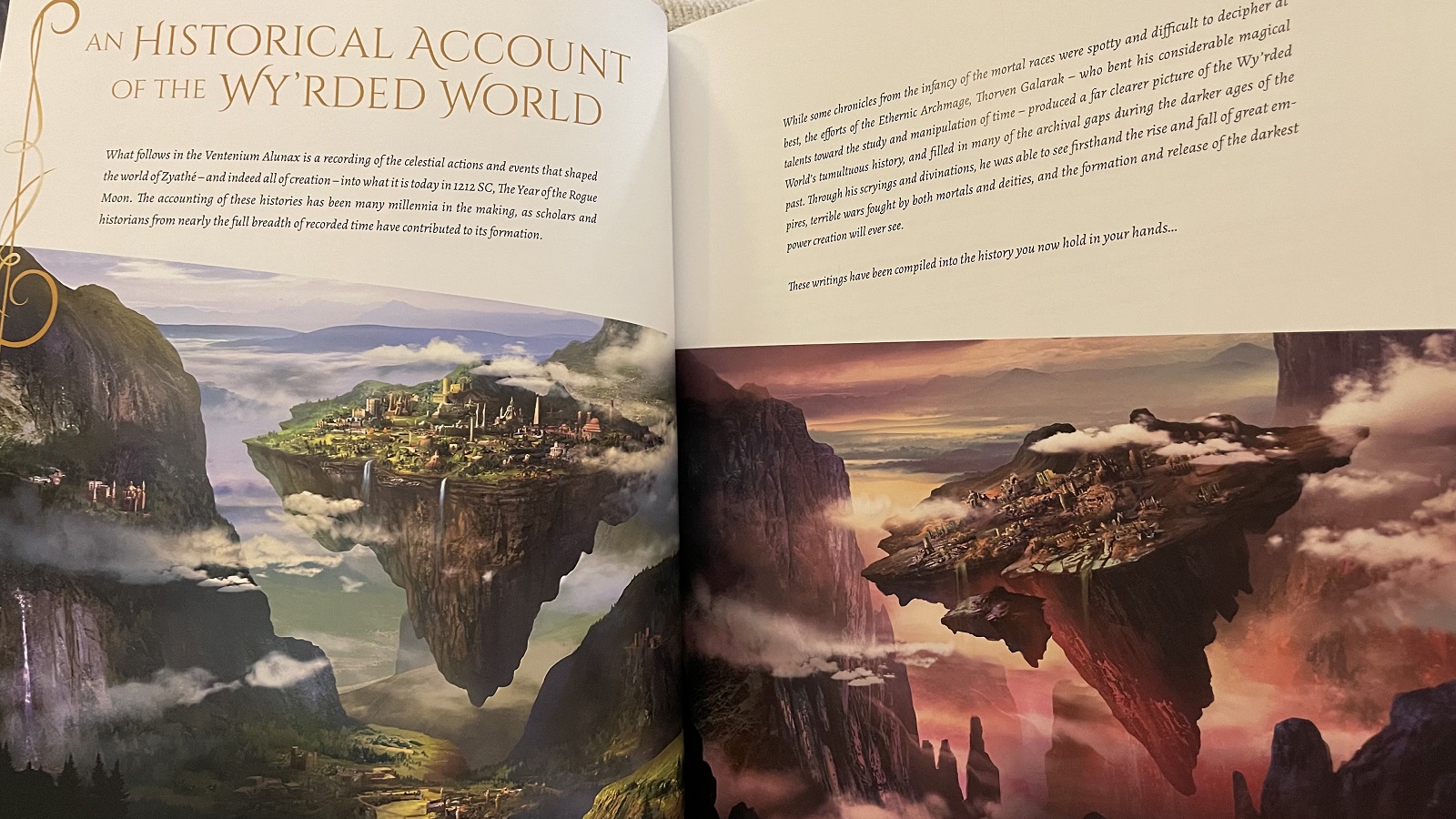
The history chapter shows the depth of the world building that has gone into this setting. The extensive chain of events covering the span from creation to present day takes a while to get through. This opening chapter immediately brings to mind the warning in the introduction, “much information about little… little information about much”. There are so many things referenced in the opening history that only appear once and then fade away, I kept losing track of where I was in the story and I wondered if a lot of the information was all that relevant. For instance, during the war of the gods, we are told that Thealass, the god of martyrs, dies. In the next section, we find out that Thealass was brought back by AvovA as Buurne. But, I’m not sure I’m all that much better off for finding out Thealass’s name in the first place. It certainly gives the world a lived in feel, but at the same time, there are other areas that I would rather have more details, and I’d willingly trade Buurne’s previous name for more on significant personalities in the world. Opening the book with such a long chapter on history was a bit dry and I had to take multiple stabs to get through it.
Magic is the topic of the second chapter, introducing the reader to the way the magic system works in the world. The source of magic, which is commonly referred to as the “Flow”, supports all magic, arcane and divine. Arcane users pull from the Flow directly to create magic, while divine casters do not access the Flow directly, but rather through their deity. Divine casters must make themselves as much like their deity as they can in order to access the Flow through them, causing clerics, paladins, and the like to emulate and follow the teachings of their religion closely. I liked the way this explanation aligns divine casters with following religious or holy rights and processes and provides for a reason to have player characters emulate their deity.
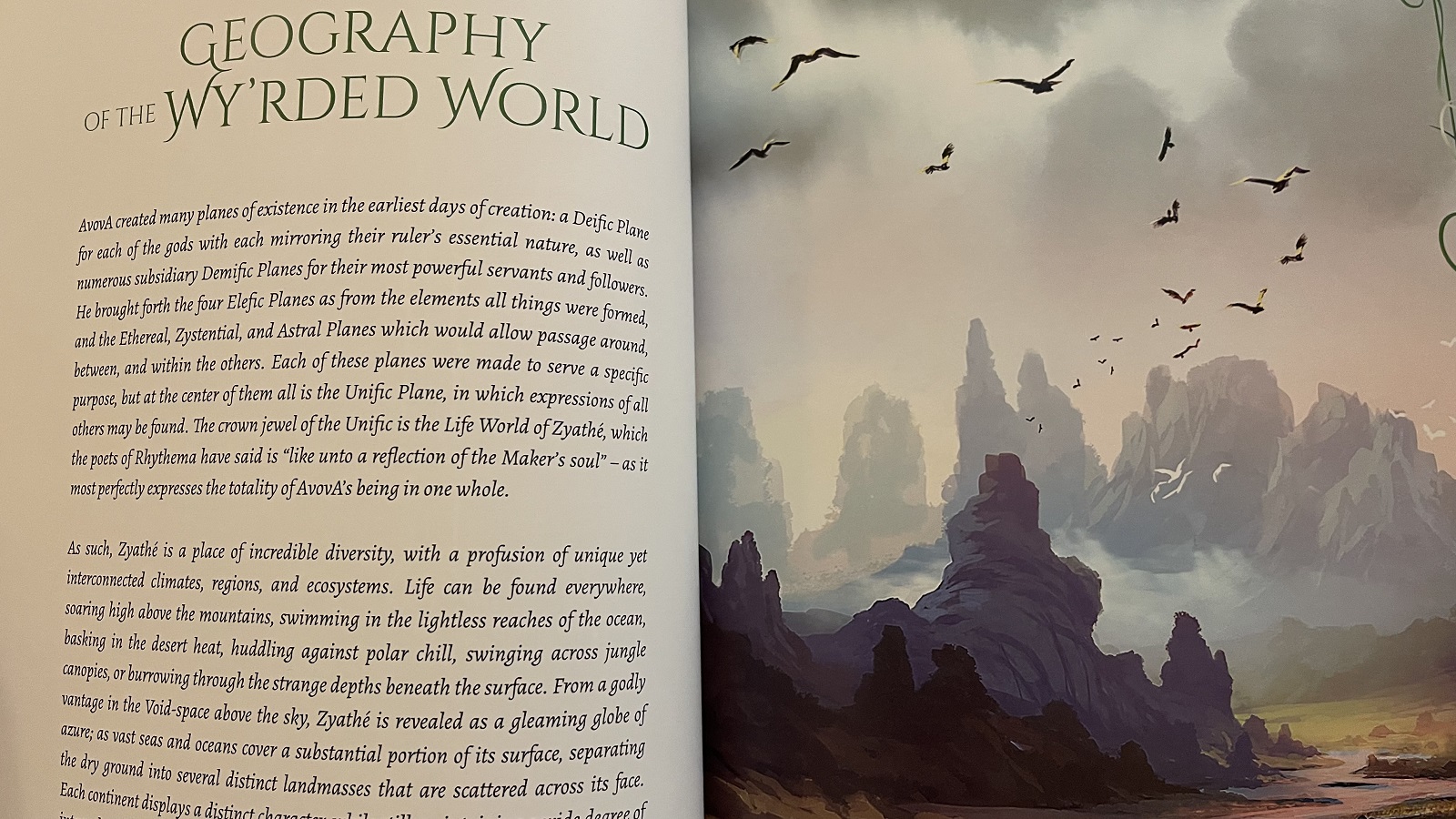
Additionally, this chapter introduces a few magical things that are not in the WotC 5e material. There are objects called Flowstones in Zyathé that can be slotted into equipment and provide basic spellcasting abilities to the equipment’s wielder. The mining and production of Flowstones is limited to one race which is incapable of touching the Flow, making the Flowstone safe for them to handle, while all others risk their lives handling the raw Flowstone or trying to cut it. There are only some basic rules about Flowstone gems and how they are used, but a lot of additional detail is reserved for the Magic volume of the Cyclopedia. Also discussed, but not in any significant detail, is the presence of both Elemental Magic and Alchemy. Alchemy has a darker side known as Narchemy, which seems to encompass the creation of drugs and poisons. Information on these other aspects of magic is limited to a few pages, apparently reserved for the volume on magic.
The chapter covering the cosmology and the calendar provides a fairly good overview of the heavens and the calendar. There are three moons, which stick to their own random cycles rather than following a strict adherence to a clockwork rotation around the world. The sky also holds a plethora of constellations, including 12 for a zodiac that corresponds to the months and 72 to represent the gods. Unfortunately, the only one mentioned with a name and description is the equivalent of the real world’s North Star, which is useful, since it would be the main reference point for navigating at night, but I sure would have liked to have seen some detail on a few more constellations. At least the zodiac would have been nice. The 72 constellations for the 72 gods could have been referenced in the sections on each of the gods, if not here. The description of the calendar and how it works is easy to follow, Zyathé has a 401 day year which is full of festivals and special days, including four corrupted days that aren’t counted in the 397 day calendar. The rest of the chapter is dedicated to a breakdown of the months, including a brief overview of their seasonal weather in the North and South hemispheres and special days, with a brief paragraph about each. This breakdown of special days is especially helpful for DMs out there to help give the players a world with a sense of time and place – when festivals and other events can be tied to annual special days, games can feel more immersive.
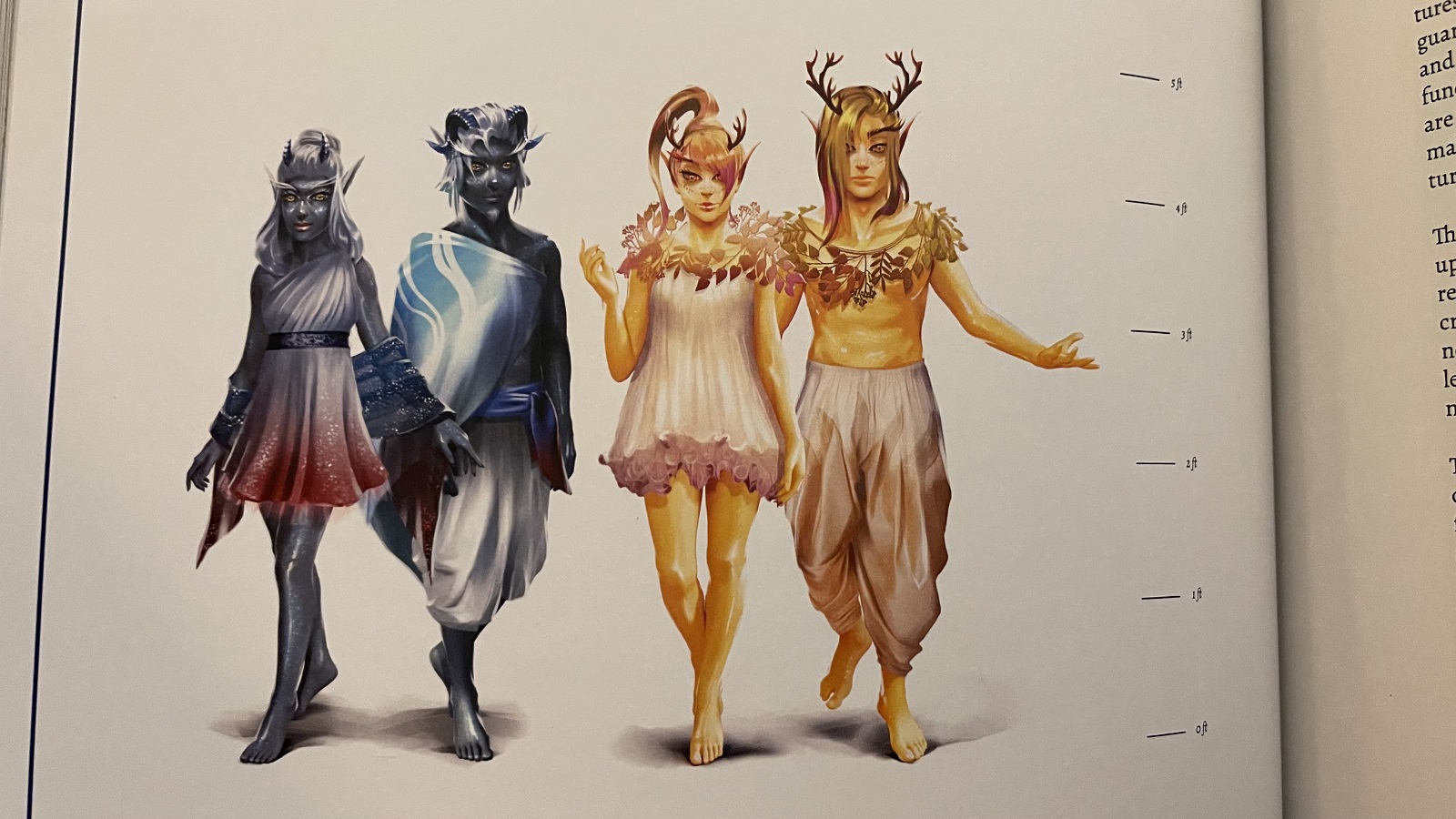
The fourth chapter covers the geography of Zyathé. Each of the continents gets a general overview, detailing the people that live there, some major cities, and general descriptions of flora and fauna. Presumably much more detailed information is in the two additional volumes of the Cyclopedia that deal with geography. There are some beautiful maps of the continents presented in each section, with the locations of what are most likely cities marked on the maps, but they are not labeled, so I couldn’t be sure that’s accurate. The markings might represent more than cities and I don’t understand why there aren’t labels to explain the markings. With all of the detail that’s in the book and the effort put into the artwork, labeling the cities seems like a no-brainer. In some instances, I was able to identify a location based on the description, but those cases were outweighed by the unidentified locations. There is a short mention of this world’s equivalent of the Underdark and some discussion of the above and below ground climate. Overall, there just isn’t enough on any given area for a DM to start right away without doing quite a bit of development. I would have liked to have seen a focus on a base-of-operations city that could serve as a starting point for a DM.
Chapter five covers the races of Zyathé. There are a lot of them! For my money, this chapter competes with the later chapter on gods for the best part of the book and the reason to play in this world. It’s the races of Zyathé that make it different from other worlds. They are all bipedal humanoids, but there is a variety here that I wasn’t expecting. The chapter discusses new races developed specifically as part of this setting and provides an overview of the traditional D&D races and how they fit into the Wy’rded World. This chapter’s strong suit is the illustrative art for each race. Full color depictions of males and females of each race with height markers next to them really help the reader understand what the denizens of this world look like. The races each come with lengthy descriptions and gameplay details necessary for character creation. This section is by far the most utilitarian of the book, with players and DMs finding tons of information here that directly applies to playing games in the setting. This section also dives shallowly into the details of the blood-touched characters who have inherent magical abilities. Largely shunned by the general population, being blood-touched is presented as a negative, but reads as a desirable thing to have. Much like psionics in old-school AD&D, you have to roll the dice to gain a blood-touched trait. This is an old-school approach to character creation, with D&D focused heavily on building exactly what a player wants in 5e, having a one-roll shot at gaining an ability is unusual and may not be to the liking of some players and DMs. Fortunately, like any RPG rule, you can just change it.
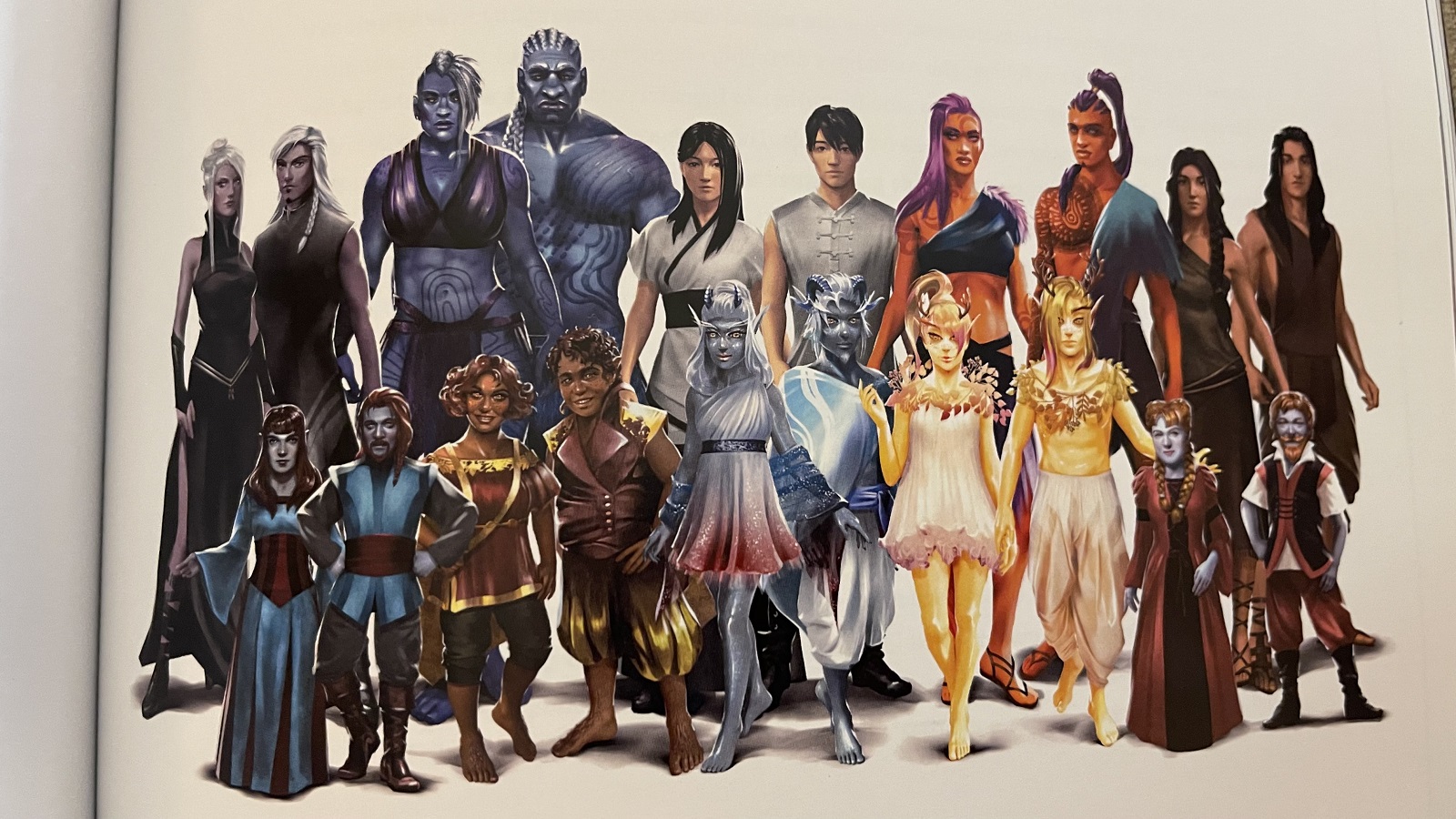
Gods are the topic of chapter six. Opening with a blurb about the role of the gods in the setting and a few sentences about the planes of the gods, the next 55 pages or so detail each of the 72 gods. There is plenty here for DM and player alike, including a bit of history on each god, clarifying what was hinted at in the history at the beginning of the book and providing game play information and flavor for each god. This impressive section gives the reader plenty to chew on for each god and serves up a good pantheon for the game to feed off of. As I said before, the pantheon and the player races stand out to me as the main draws for this setting and are what interest me in Zyathé and make me want to play there. The most interesting concept in this chapter is the four outlying Lords of Corruption. In the Wy’rded World, we are introduced to a pantheon with an even number of good, neutral, and evil gods… but then there are four… eviler… gods…? They are the last entry in this chapter, but in their section’s title “gods” is in quotation marks, so even the setting isn’t sure about their status. Regardless, the Lords of Corruption seem to be a nugget of story that plenty of adventuring can spring from.
The final chapter of the book is sadly the shortest though probably one of the most useful. This chapter about daily life in Zyathé provides a page or two on each of the following topics: governments, churches, guilds, travel, magic use, war, languages, and agriculture and industry. An appendix discussing money and economics that could have been included in the preceding chapter completes the book. All of the sections of the last chapter and appendix could use some expansion. There is enough here to get a DM started, but it leaves a whole lot for the DM to do. I would have preferred to see the expansive history section at the front shortened and these parts lengthened. I find a lot more utility for the gamer in the various parts of the world they interact with in every game session than events that happened ten thousand or more years before that might be referenced once in a campaign.
Stylistically, the book is written as if it exists in the setting – as if written for people living in the world it describes. There are introductory letters at the beginning of each chapter as if written by various scholars of the world. The style of writing, especially in the history chapter, is a kind of archaic, almost biblical style, using words like “lo” and “’twas”. Other portions read more modern with some shifting of style throughout the book, breaking into rules-related prose when necessary. The only portion that explicitly shifts style for a significant length is the appendix on economics, which is written directly to the DM and has a conversational style that feels like the Gooey Cube designer is talking directly to the DM. The epistolary introductions for each chapter were nice and flavorful, but for me, presenting the history chapter as an excerpt from an in-game history was off-putting. Each archaic turn of phrase, like “and lo…”, tended to make me think about the writing style rather than the story – but that’s me, others may find it less distracting.

This book is well produced, easy to follow, and well laid out, however, there is no index to guide a reader to where specific information might be in the book, nor is there a glossary. It would have been super useful to have both of these things in the book. An index at the back of the book could really save time since this is a reference book intended for use in game play. Similarly, there are novel terms used in the book that are applicable only to the Wy’rded World, and having a glossary in the book to explain those terms would also be a huge time saver. And, on a preference side, including a pronunciation in the glossary would be pretty useful too. After all, how are we supposed to say, “Zyathé”? I have an idea, but we don’t use the “é” in English, so I don’t know how to approach it for sure. And that’s not the only word the “é” shows up in. For that matter, what’s the apostrophe in “Wy’rded” for?
The artwork throughout the book is excellent. Art is one of the more expensive and difficult parts of a project like this, and for a third party publisher to get it so right is outstanding from my perspective. When I cracked this book open I had no expectations of seeing anything other than some passable black and white illustrations. Unless one snuck by me, there isn’t a single black and white picture in the book and all of the artwork is evocative and fits in the book. My only complaint about it goes back to the lack of labels (other than continent names) on the full color world maps.
So what is this world all about? Well, it’s a D&D world with a lot of gods and a long history. The unique things it brings to the table, Flowstones and blood-touched, along with a full geography, calendar, cosmology, pantheon, and set of races, give DMs and players alike a lot to work with. It’s not a Darksun or Eberron with a strong flavor that sets it apart from the other worlds – there’s no Lightning Rail here or endless desert – but what is here is a new world with room to expand and unique and interesting races.
Cyclopedia Zyathica Volume 1 The Wy’rded World
Good
This book is a great introduction to the expansive Wy'rded World, allowing gaming groups to create characters and start adventures. The chapters on races and gods are particularly useful for game preparation, although the geography section is lacking in detail. The book's history can be difficult to engage with without a clear understanding of the world. Despite some areas being underdeveloped, the book provides a new world for players and Dungeon Masters to explore, offering new races and a pantheon. It's a good choice for groups seeking a new world to explore.
Pros
- Player races and pantheon are extensive and interesting
- Artwork and production quality are outstanding
- Enough information to get started in a developed world
Cons
- No index or glossary
- Magic and geography sections lacking details
- Too much history and not enough on the day-to-day world
